Trip Journal

In early 2013, just after Tet, I visited Vietnam to speak with businesses throughout the country. I travelled over the course of one week from the Mekong Delta to Central Vietnam and ended up in the North. Being involved in Vietnam since the late 1960s and making these trips yearly since the early 1990s has given me insights on the country which I will share below.
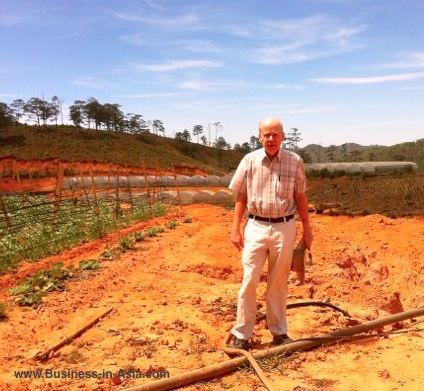
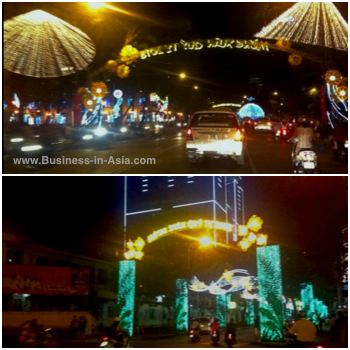
I arrived just after the final day of Tet. The traffic was still congested and the Tet lights and decorations were everywhere. Markets were reopened and many stores were already back in business but the joy of Tet was evident in people’s faces I met everywhere. Shortly after arrival I traveled to Dong Thap Muoi and the surrounding area to meet my old friend Nguyen Van Be. Mr. Be (or Ong Ba) as he is known is Vietnam’s foremost expert on traditional medicine and the use of naturally grown substances as medicines and remedies (see our previous article: Traditional Medicine With a More Scientific Basis Continues To Prosper in Vietnam). After a car and boat journey I finally reached Mr. Be’s facility which stretches for 1,000 hectares of indigenous trees, canals, fields and forests. The peacefulness of the area again charmed me and it was good for me to see the many improvements that Mr. Be had made to the property and to hear his future plans for more changes.

"...I arrived just after the final day of Tet...the joy of Tet was evient in people's faces I met everywhere..."
With Mr. Be and others I discussed the economy and local conditions. 2012 was a hard year for most small and medium companies in Vietnam. Interest rates soared as Vietnam tried to drive down inflation. Banks increased collateral and other conditions and many companies closed or limited operations in the ensuing difficult financial environment. According to local media and to the NY Times, over 20% of small and medium sized companies have been forced to close their doors because of the difficulties. Many more I visited were running with much fewer workers and little activity since they couldn’t get the operating loans that they had depended on in the past. The property market has slowed down markedly and in the suburbs of Ho Chi Minh City, huge apartment blocks have few lights at night as flats aren’t selling and many are just holding on rather than dumping the apartments and condominiums they had bought for speculation but now are underwater on in a buyers market.
The next day I flew to Cam Ranh Bay. The airport which sits on the old US Cam Ranh Bay Air Base has a renovated air terminal and now is seeing an increasing number of tourists although still small numbers compared to Thailand’s major seaside destinations of Phuket, Koh Samui and Pattaya. In our hotel which was right in the center of the beach area in Nha Trang most of the foreign tourists seemed to be Russian and/or Australians. Nha Trang continues to have a beautiful beach and it is sad that the local city government hasn’t protected it. Zoning in the beach area is much less strict than it should be and major parts of the beach are encroached with all sorts of sellers of tawdry and cheap products and services. The service in our hotel has improved considerably from the times I stayed in Nha Trang in 1970 and from the first times I returned in 1995 and 1996.
Generally throughout my travels in Vietnam, one could see in dramatic fashion that many in Vietnam have benefitted from the opening to the world since 1993. Many Vietnamese have the latest cellphones, nice cars and live far better than they ever dreamed of in the early 1990s. In the midst of this, however, crime and prostitution are rampant. The guard in front of our hotel told me to be careful when taking pictures with my Apple Iphone as crooks were targeting tourists and running into them and making off with the fallen phone or outright snatching the phone on motorbikes or through other means. On the beach, twice I was propositioned as I walked. Prostitution is illegal in Vietnam and the situation is much improved from the days of the US Army but the oldest profession still lives on.
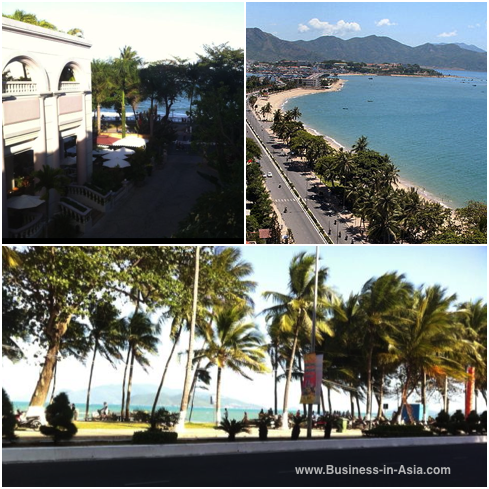
The next morning we drove up Highway 1 toward Van Phong Bay which is nearly two hours drive north. On the way our Vietnamese driver was waived over by Vietnamese traffic police for from what all of us in the car agreed was no reason other than to extort cash payments in lieu of arrest and potential impoundment of the vehicle. This petty corruption is all too common throughout Vietnam. The police pray on trucks, farm vehicles, motorcycles and generally leave the higher class cars alone as these often are owned by the well connected who might jeopadize their rice bowl. Is it any wonder that the traffic police are so disposed by most drivers.
As we barreled up Highway one, I had to reflect that despite the expenditure of hundreds of millions in World Bank and other funds, Highway 1 today is no better and possibly worse than it was in the mid-1990s. When I mentioned this to my traveling partners, they chuckled and said that the World Bank had taught Vietnamese government officials how to professionalize their corruption. They said that the amount of money stolen or mis-used that came from the funds planned for Highway 1 improvements just ensured that the road would breakup quickly and show wear in the first major storm. They did not see any harm in this but I was appalled. I noted that Vietnam would only get access to so-much World Bank or other donor money, not spending each dollar of it wisely just ensured that Vietnam’s eventual infrastructure would be that much weaker. I noted that Vietnam’s roads are no where near the standards of Thailand, Malaysia or China and were hardly better than those in Cambodia and Laos. If the standard for Vietnam was to be the best between Cambodia, Laos and Vietnam, then Vietnam was winning but if it wanted to compete internationally Vietnam infrastructure had a long way to go.
After about two hours of driving we reached Van Phong Bay. The Vietnamese government had once touted this as Central Vietnam’s new Super port. In the financial crisis these plans got downsized and finally closed out and peeling paint on dilapidated signs, heaps of unused pilling, rusting dredges and cranes are all that now remains of these dreams.
We were in Van Phong Bay to look at a seaweed growing project and took a boat out through the fish, shellfish and lobster farms to see the seaweed beds. The bay is a far sight in terms of clarity from what it was in the mid 1990s. The runoff into the bay, the pollution from the aquaculture projects and other pollution now routinely causes trouble for the fishermen who try to make their living in these beautiful surroundings. Seaweed growing seems to be a potentially suitable industry that could offer much to help local earnings and to further diversify the economy but at this time the seaweed company is still working through a number of issues trying to find the best species and to limit problems with pollution and with virus and other diseases that attack the seaweed.
We then drove back toward Nha Trang and had some of the best drinking coconuts I have ever had at a stand outside of Nha Trang. This area is known for having an underground stream and particularly clear water and the drinking coconuts which were about 20 cents each were really excellent and by far the best I have had anywhere in the developing world.
"..if [Vietnam] wants to compete internationally, Vietnam infrastructure has a long way to go.."
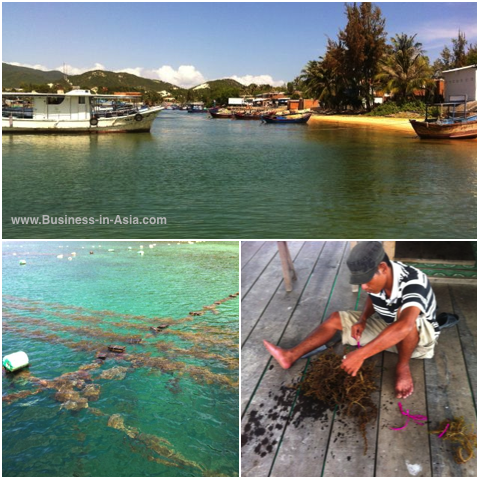

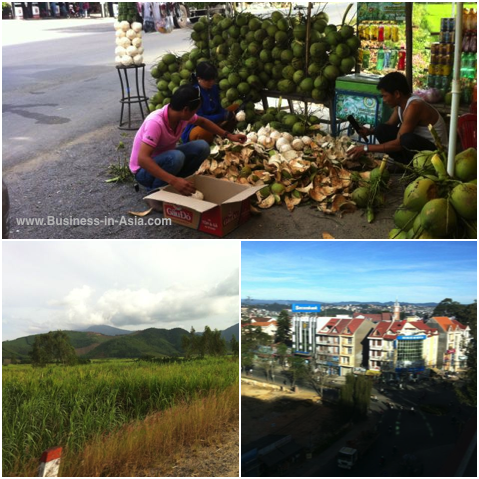
We then took a less travelled road from just north of Nha Trang and wound our way up a valley which had a number of minority people living in villages who predominantly were growing sugarcane. We went by the sugar mill which evidently according to our driver is in serious danger of closing due to the lack of finances. It would really be a shame to see this happen as it was very obvious that thousands of families depended on both growing and harvesting the sugarcane.
The road joined the main road between Nha Trang and Dalat, the former French Hill Station, higher up in the mountains. I remember seeing these hilly areas covered by rain forest when I was in the US Army in 1970 and was stationed just outside Nha Trang. A storm came up as we climbed higher and the mountains brought back faded memories of my time in the Army in Vietnam and how these mountains had appeared both so beautiful and also so dangerous.
As we came to the summit, the temperatures had dropped sharply in the higher elevation. In Nha Trang, the temperatures were in the high 20s Celsius but here as we approached Dalat the temps were in the single digits and there was a definite chill in the air. That night we reached our hotel in central Dalat, the Hotel La Sapinette which was modern and where the staff were both professional and welcoming. The hotel has a little less than 90 rooms and both the hotel and surrounding restaurants offer great meals on the locally grown vegetables and other items grown in the region.
The next morning, we went to see local agriculture projects in the region. Dalat has become a hive of agricultural grow projects. Many grow flowers which are sent to Ho Chi Minh City, Nha Trang and other Vietnam cities. We also saw strawberry and various kinds of fruit, also mostly for the Ho Chi Minh City market. These grow operations run the gamut from very well laid out and professionally run operations to less well financed very basic operations which maybe use a greenhouse frame made of metal or bamboo covered by plastic sheeting. This form of business is everywhere near Dalat and although farmers told me they too were suffering under the high interest rates and increased collateral requirements and showed me companies that had failed, they also showed me small and medium sized operations that were continuing to prosper.
That afternoon we made our way to Dalat airport. The airport is modern and hoping to build increased traffic for what currently looks like a facility that could easily double its traffic with little real difficulty. The airport is a fair ways outside of Dalat which is necessary as the Dalat area itself does not have a close in flat area and even during the French and American times the airport was not close to the downtown area.
That night we flew to Hanoi where the rain was falling and it was colder than even Dalat. My memory of Tet in Hanoi is of mostly cold and often rainy weather and this visit was similar. The airport is like I remembered. One sad thing is that all the ads and billboards are for international brands. You don’t get a feeling initially of being in Vietnam and that is unfortunate.
That night as we came into the city, I marveled at the urban sprawl that has taken rice fields in the 1990s and turned them into acres and acres of high-rise buildings, apartments and half build real estate developments. Again, I feel sorry for Vietnam that more efforts weren’t taken on better zoning to both protect farmland (some of the richest in the country) and to better plan and house Hanoi’s growing population. In 1995 Hanoi had a population of under 3.5 million - today it is over 5 million and growing. The city is pulling former farmers and agricultural workers into the city to work in factories, services and other low paid work but housing and often services for them are not what they could be.
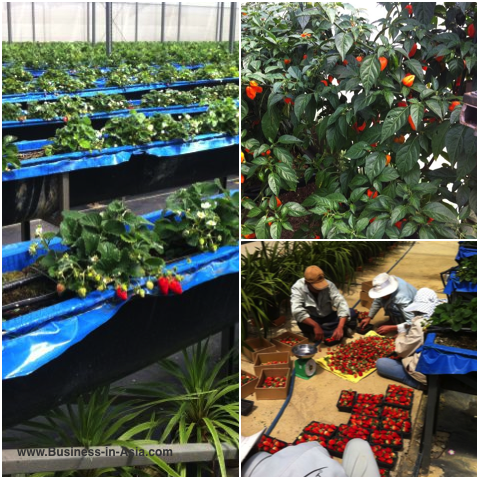
The next day we looked at real estate projects in Hanoi. There are many being built at a slower rate because of operating funds shortages, stopped or for sale to see. There is potential opportunity here but from most of the people I talked to I got the impression that things had yet to bottom out and that any action at this time was risky and premature. I left Hanoi feeling that I had seen a lot. In general my impression is that for many life is better today than it was in the early 1990s. The standard of living appears higher and this is confirmed by development statistics from the major development agencies. Millions of people have been lifted out of poverty and although life is still hard for many especially in rural areas, most people are optimistic that things although tough now will improve further in the years ahead.
Increasing pollution, corruption and poorly constructed and deteriorating infrastructure are all clear problems. Tourism arrivals are rising but not in comparison to many regional competitors who are still growing despite the tough economic outlook. Vietnam remains a place with many opportunities for investment. I feel that agriculture, aquaculture, food processing, pollution control, renewable energy, healthcare, education and supply chain products most of which are still imported all are areas that will see strong growth. I remain confident that the glass is half full and not half empty despite the obvious challenges. My reason is a belief in the innate drive of the average Vietnamese to improve conditions for their children’s future. Don’t underestimate Vietnam. It still has much to offer the world.
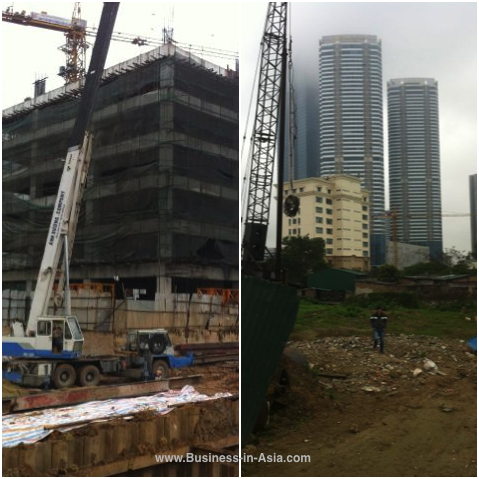
About the Author:
Christopher W. Runckel, a former senior US diplomat who served in many counties in Asia, is a graduate of the University of Oregon and Lewis and Clark Law School. He served as Deputy General Counsel of President Gerald Ford’s Presidential Clemency Board. Mr. Runckel is the principal and founder of Runckel & Associates, a Portland, Oregon based consulting company that assists businesses expand business opportunities in Asia. (www.business-in-asia.com)
Until April of 1999, Mr. Runckel was Minister-Counselor of the US Embassy in Beijing, China. Mr. Runckel lived and worked in Thailand for over six years. He was the first permanently assigned U.S. diplomat to return to Vietnam after the Vietnam War. In 1997, he was awarded the U.S. Department of States highest award for service, the Distinguished Honor Award, for his contribution to improving U.S.-Vietnam relations.
Follow us on Twitter: @InsightNewsAsia
Copyright © 2013: Runckel & Associates, Inc
Visit our other website: Asia-Art.net


|
|